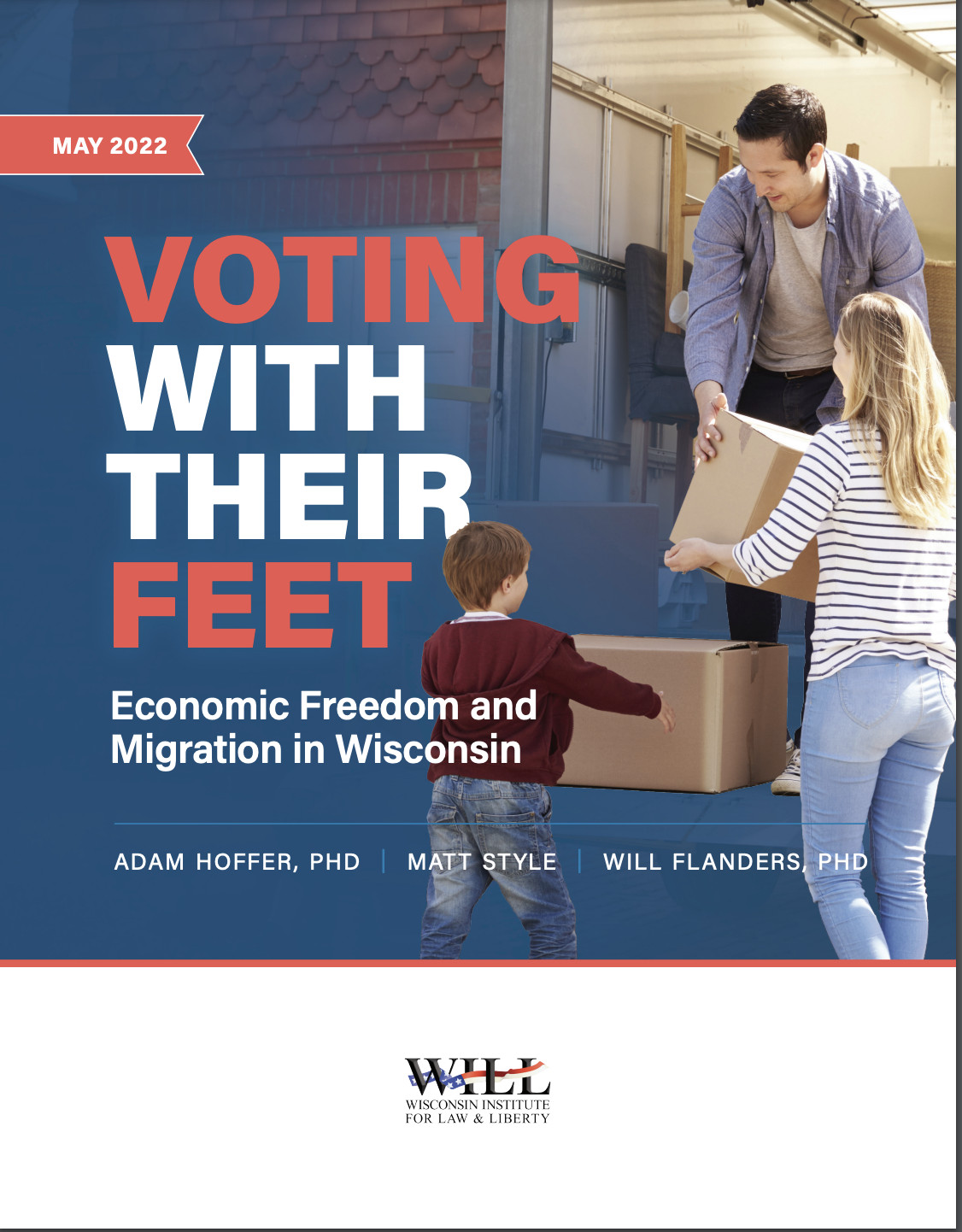The News: A new study from the Wisconsin Institute for Law & Liberty (WILL) finds that economic policy is a key driver of migration flows; with Wisconsin gaining 65,000 new residents from states that rank low for economic freedom, while losing nearly 38,000 to states that rank high for economic freedom. The study examines state-level migration during a five-year period from 2015-19, and metro area migration from 2010-15.
According to the Economic Freedom Index (EFI), produced annually by the Fraser Institute, Wisconsin ranked 19th among states for economic freedom during the period under study.
The Quote: Adam Hoffer, WILL Bradley Freedom Fellow and Director of the Menard Family Initiative at the University of Wisconsin – La Crosse, said, “Our results reinforce the idea that Wisconsin needs to set policies that attract workers and businesses. We can’t change the weather. But we can change the policies that make Wisconsin an attractive place to live and work.”
Diving Deeper: Voting With Their Feet: Economic Freedom and Migration in Wisconsin, uses existing data from the Economic Freedom Index (EFI), combined with data on the movement of Wisconsinites between Metropolitan Statistical Areas (MSAs), to examine the role that economic freedom plays in the state’s migration. The findings include:
- Between 2015 and 2019, Wisconsin gained nearly 65,000 residents from states that have lower Economic Freedom Index scores.
- Between 2015 and 2019, Wisconsin lost nearly 38,000 residents to states with higher Economic Freedom Index Scores.
- Wisconsin cities lose residents to growing cities with more economic freedom. Cities like Phoenix and major Texas cities that feature higher EFI rankings are among the cities Wisconsin loses to the most nationally.
- Wisconsin gains residents from its less free neighbors. Wisconsin is a net beneficiary of migrants from nearby cities like Chicago and Rockford, IL, which have lower EFI rankings than most Wisconsin cities.
- Milwaukee metro area drives Wisconsin’s net loss of migrants. While most other MSAs in the state experience modest population growth, the losses in Milwaukee fully account for the state experiencing a net loss of migrants.
- Appleton, Racine and Madison drive migrant growth in the state. Combined, these areas saw a net positive of more than 1,500 MSA-to-MSA migrants per year from 2010-2015.
- To increase migration, Wisconsin should implement policies that increase economic freedom. This includes further tax cuts, expansion of educational freedom through a more open school choice program, and occupational licensing reform.
What It Means: Where people live is always a complex decision with lots of variables. But economic policy and freedom do play a role. As governors and mayors consider what it takes to grow their states and their cities, getting the economic and tax environment right can go a long way towards making a community attractive.
Read More:
- Voting With Their Feet: Economic Freedom and Migration in Wisconsin, Adam Hoffer, Matt Style, and Will Flanders, May 2022

Adam Hoffer, PhD
Bradley Freedom Fellow

